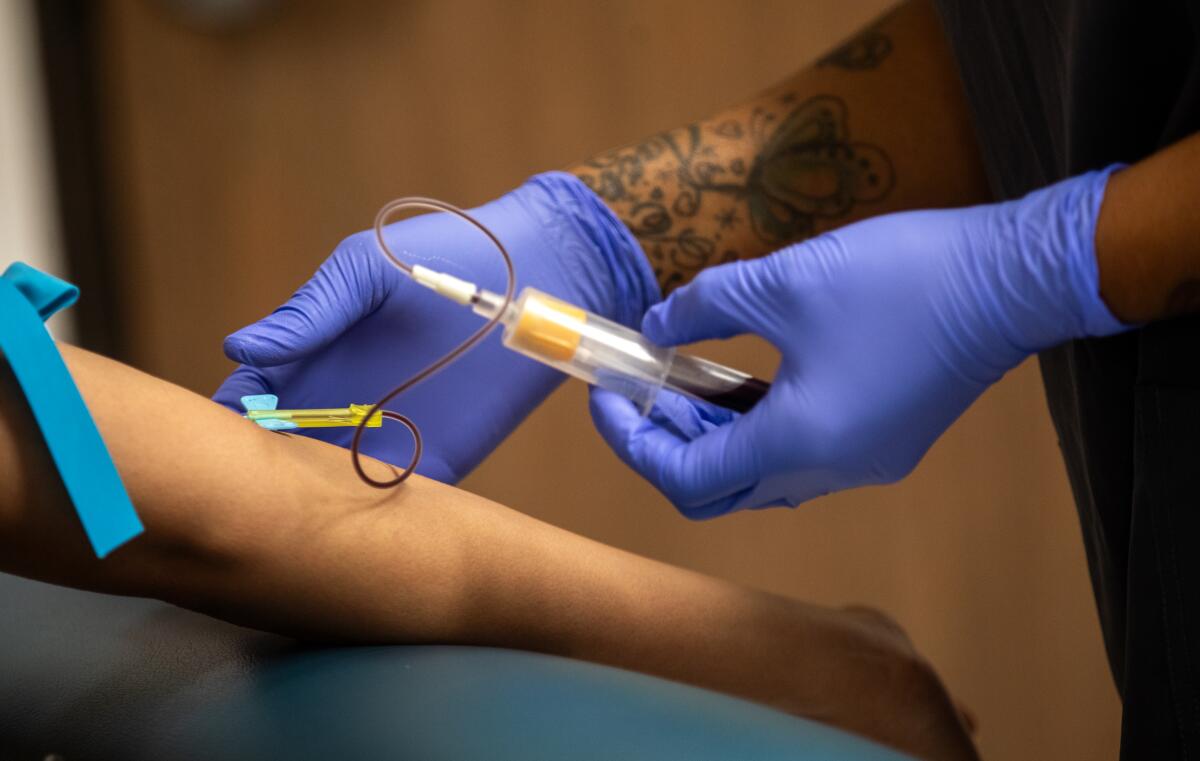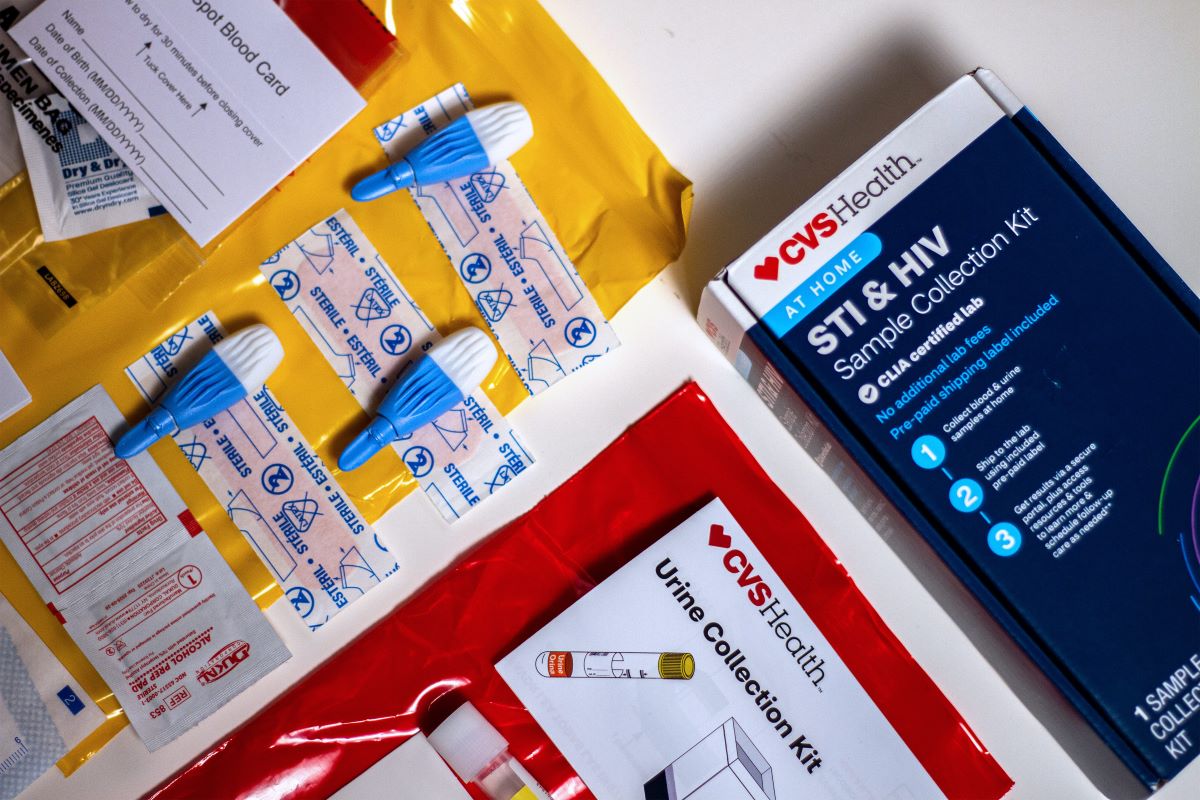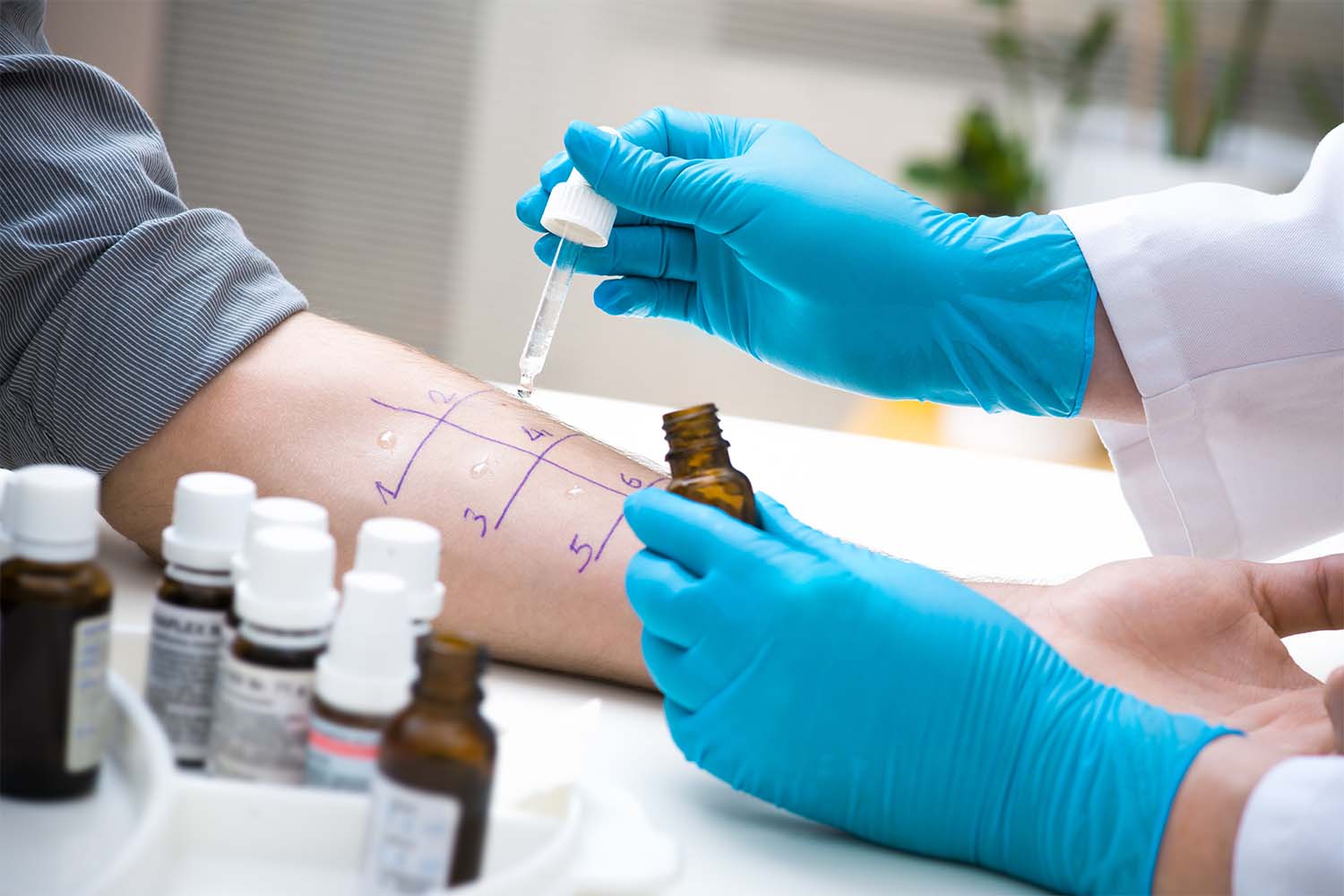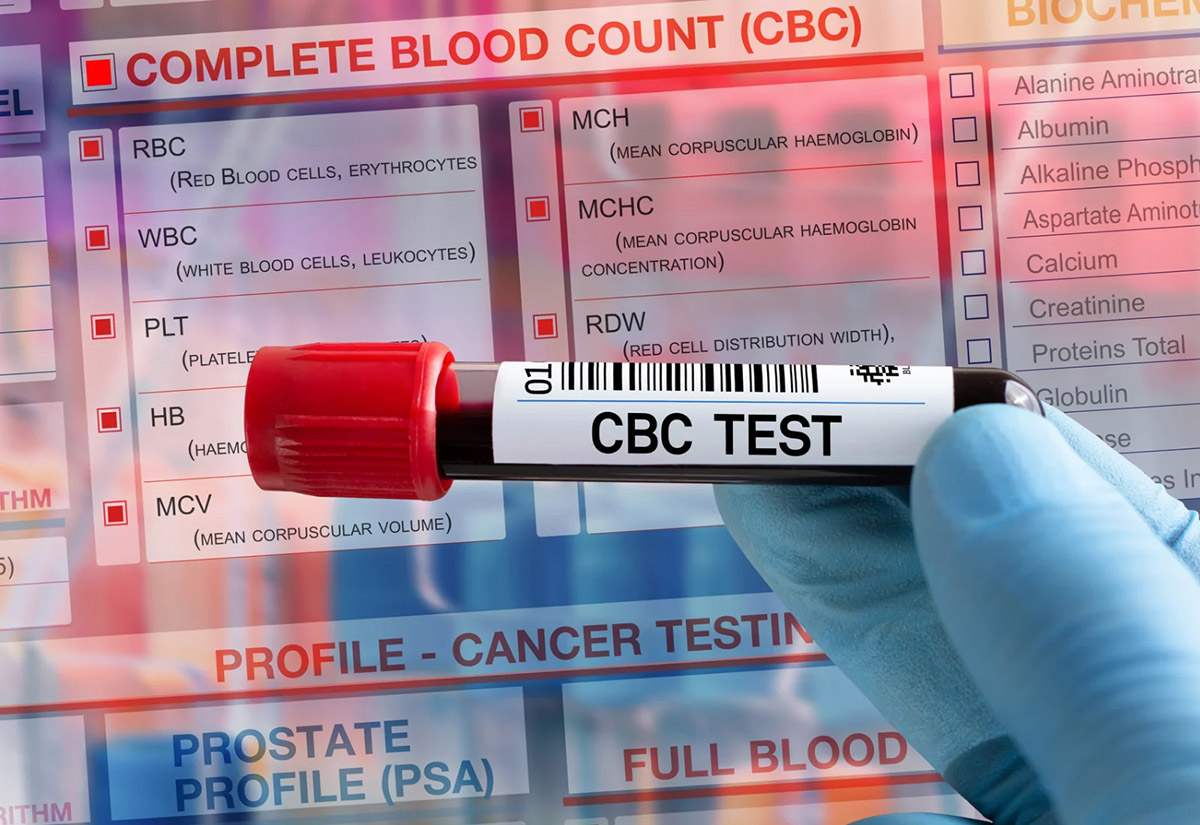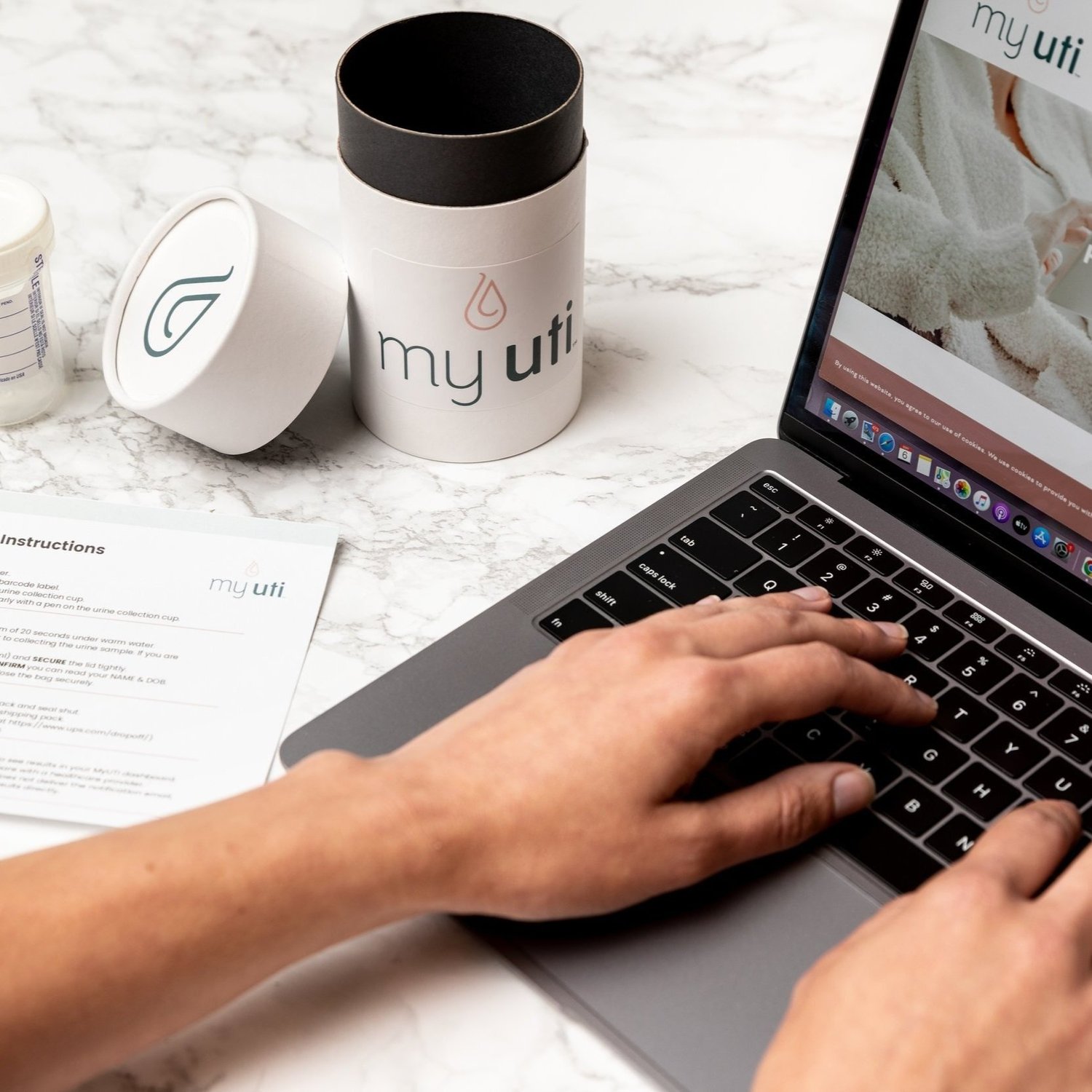

Finance
How Much Does A UTI Test Cost With Insurance
Published: November 21, 2023
Discover the cost of UTI tests with insurance and find out how to finance your healthcare expenses. Learn more about budget-friendly options.
(Many of the links in this article redirect to a specific reviewed product. Your purchase of these products through affiliate links helps to generate commission for LiveWell, at no extra cost. Learn more)
Table of Contents
Introduction
Urinary Tract Infections (UTIs) are a common medical condition that can affect people of all ages and genders. If left untreated, they can lead to more serious health complications. Therefore, it is important to diagnose and treat UTIs promptly. One of the key steps in diagnosing a UTI is through testing.
In this article, we will explore the various aspects of UTI testing, including the methods used, the importance of testing, and the factors that can affect the cost of UTI tests. We will also delve into the topic of insurance coverage for UTI testing and discuss affordable options for those seeking to get tested.
Understanding UTIs: A urinary tract infection occurs when bacteria enter the urinary system, causing infection in the bladder, urethra, or kidneys. Common symptoms of a UTI include frequent urination, a burning sensation during urination, cloudy or smelly urine, and pelvic pain. UTIs are more common in women due to their shorter urethra, but men can also be affected.
Importance of UTI Testing: Proper diagnosis of a UTI is crucial for effective treatment. UTI tests help healthcare providers determine the presence of bacteria or other infections in the urinary tract. By identifying the specific bacteria causing the infection, doctors can prescribe appropriate antibiotics to target and eliminate the infection.
UTI Testing Methods: There are different methods used for UTI testing, including urinalysis, which involves analyzing a urine sample for signs of infection. This can include examining the urine for bacteria, white blood cells, or abnormal levels of substances that may indicate an infection. In some cases, a urine culture may be done to identify the specific bacteria causing the infection, allowing for targeted treatment.
Understanding UTIs
A Urinary Tract Infection (UTI) is an infection that occurs in the urinary system, which includes the bladder, urethra, and kidneys. UTIs are typically caused by bacteria, although they can also be caused by viruses or fungi. It is estimated that about 50% of women and 12% of men will experience a UTI at least once in their lifetime.
UTIs can occur when bacteria from the digestive tract, such as Escherichia coli (E. coli), enter the urethra and travel up into the urinary system. Women are more prone to UTIs due to their shorter urethra, which makes it easier for bacteria to enter the bladder. Sexual activity, pregnancy, menopause, and the use of certain birth control methods can also increase the risk of developing a UTI.
There are different types of UTIs, depending on which part of the urinary tract is infected. A lower UTI, also known as cystitis, affects the bladder and causes symptoms such as frequent urination, a strong urge to urinate, and a burning sensation during urination. An upper UTI, also known as pyelonephritis, affects the kidneys and can cause more severe symptoms, including fever, back or side pain, and nausea.
It is important to recognize the symptoms of a UTI and seek medical attention promptly. If left untreated, a UTI can lead to more serious complications, such as kidney damage or sepsis. It is also important to note that UTIs can sometimes be asymptomatic, especially in older adults, leading to a delayed diagnosis and potential complications.
In addition to bacteria, risk factors for developing a UTI include urinary tract abnormalities, a weakened immune system, urinary catheter use, and certain medical conditions such as diabetes or kidney stones. Taking preventive measures, such as staying hydrated, urinating before and after sexual activity, and maintaining good hygiene, can help reduce the risk of developing a UTI.
Importance of UTI Testing
UTI testing plays a crucial role in diagnosing and treating urinary tract infections. Timely and accurate testing is essential for several reasons:
1. Confirmation of Infection: UTI testing helps to confirm the presence of bacteria or other infectious agents in the urinary tract. Symptoms alone may not be sufficient to diagnose a UTI, as they can overlap with other conditions. Testing provides objective evidence to support the diagnosis.
2. Identification of Specific Bacteria: UTI testing can identify the specific type of bacteria causing the infection. This information is vital for prescribing the most effective antibiotics. Different bacteria may respond differently to various antibiotics, so knowing the specific strain helps to tailor the treatment and increase the chances of successful eradication of the infection.
3. Prevention of Complications: UTIs, if left untreated or poorly managed, can lead to more severe complications. In some cases, the infection can spread to the kidneys, leading to a kidney infection (pyelonephritis). This can result in more severe symptoms and potentially damage the kidneys. UTI testing allows for early intervention and appropriate treatment to prevent these complications.
4. Monitoring Treatment Effectiveness: UTI testing is also valuable in assessing the effectiveness of the prescribed antibiotics. Follow-up testing can confirm if the infection has been successfully cleared or if further treatment is necessary. This ensures appropriate management of the infection and prevents the development of antibiotic resistance.
5. Patient Comfort and Quality of Life: UTIs can cause significant discomfort and disrupt daily activities. Prompt diagnosis and treatment through testing can provide relief from symptoms and improve the overall quality of life for individuals suffering from UTIs.
It is important for healthcare providers to recognize the importance of UTI testing and incorporate it into their diagnostic protocols. Patients should also be proactive in seeking appropriate testing if they suspect a UTI, as early intervention can lead to faster resolution of symptoms and prevent complications.
UTI Testing Methods
There are several methods available for UTI testing, depending on the healthcare provider and the specific situation. The most common methods include:
- Urinalysis: Urinalysis is the most basic and commonly used method for UTI testing. It involves analyzing a urine sample to detect any abnormalities or signs of infection. The urine sample is examined for the presence of bacteria, white blood cells, red blood cells, and other substances that may indicate an infection. The test may also assess the pH level and concentration of urine. Urinalysis can provide valuable information in diagnosing UTIs, but it may not always identify the specific bacteria causing the infection.
- Urine Culture: In some cases, a urine culture may be conducted alongside or after a urinalysis. A urine culture is a more detailed test that aims to identify the specific bacteria responsible for the infection. A urine sample is cultured in a laboratory, allowing the bacteria to grow and be identified. This helps in selecting the most appropriate antibiotic treatment. A urine culture is particularly useful for recurrent or complicated UTIs, as well as when the initial treatment does not lead to resolution of symptoms.
- Rapid Diagnostic Tests: Rapid diagnostic tests are available that can provide quick results within minutes. These tests detect the presence of certain substances, such as leukocyte esterase or nitrites, which are indicative of a UTI. While rapid diagnostic tests are convenient and can help with initial assessment, they may not provide as accurate results as urinalysis or urine culture in all cases. Therefore, they are often used as a screening tool that may need to be followed up with further testing.
- Imaging Tests: In some instances, healthcare providers may recommend imaging tests, such as an ultrasound or a CT scan, to assess the structure and functioning of the urinary tract. These tests can help identify any abnormalities or underlying conditions that may be contributing to recurrent UTIs or more severe symptoms.
It is important to note that the choice of UTI testing method may vary depending on factors such as the patient’s symptoms, medical history, and the healthcare provider’s judgment. The appropriate method and combination of tests will be determined based on a thorough evaluation of the individual’s situation.
UTI Test Cost with Insurance
The cost of a UTI test can vary, depending on several factors, including the type of test performed, the healthcare provider, and the location. With insurance coverage, the out-of-pocket cost for a UTI test may be significantly reduced or covered entirely.
Health insurance plans typically cover diagnostic tests, including UTI tests, as part of their coverage. However, it is important to note that the extent of coverage and the specific tests covered can vary between insurance plans. Some insurance plans may cover only certain types of tests, while others may cover a broader range of diagnostic procedures.
The cost of a UTI test with insurance depends on the individual’s insurance plan and the specific terms of coverage. In general, individuals with insurance may be required to pay a copayment or coinsurance for the test. This can range from a fixed amount, such as $20 or $30 per visit, or a percentage of the total cost. The actual cost will depend on the terms specified in the insurance plan.
It is essential to review the details of your insurance coverage, including any applicable copayments or deductibles, before undergoing a UTI test. This will help you understand your financial responsibility and plan accordingly.
Additionally, it is worth noting that the cost of the UTI test may also depend on where the test is conducted. If the test is done at a healthcare facility or a hospital, the cost may be higher compared to a laboratory or clinic that specializes in diagnostic testing.
Before scheduling a UTI test, it is advisable to contact your insurance provider or check your policy documents to confirm coverage for the specific test. This will ensure that you are fully aware of any potential out-of-pocket expenses and avoid any surprises when it comes to billing.
Remember, early detection and treatment of UTIs are vital to prevent complications and discomfort. Understanding your insurance coverage can help ease financial concerns and ensure timely access to necessary healthcare services.
Factors Affecting UTI Test Cost
Several factors can influence the cost of a UTI test. Understanding these factors can help individuals anticipate and evaluate the potential expenses associated with UTI testing. Here are some key factors that can affect the cost:
- Type of Test: The specific type of UTI test being conducted can impact the cost. Basic tests like urinalysis or rapid diagnostic tests tend to be less expensive compared to more advanced tests like urine culture or imaging tests.
- Healthcare Provider: The cost may vary depending on the healthcare provider where the test is performed. Hospitals and larger medical facilities often have higher overhead costs, which can reflect in the pricing of the tests compared to independent laboratories or clinics.
- Insurance Coverage: Insurance coverage plays a significant role in determining the out-of-pocket cost for UTI testing. The terms and conditions of the insurance policy, including copayments, coinsurance, and deductibles, can impact the individual’s financial responsibility.
- Location: The location where the test is conducted can affect the cost. The cost of living in a particular area, as well as the local market competition, can influence the pricing of healthcare services.
- Additional Tests or Services: In some cases, additional tests or services may be recommended alongside the UTI test, such as a physical examination or follow-up tests. These additional tests can increase the overall cost of the diagnostic process.
- Lab Processing Charges: The fees charged by the laboratory for processing and analyzing the test samples can impact the overall cost. Some laboratories may offer bundled pricing or discounts for multiple tests.
- Individual Factors: Individual factors, such as the individual’s insurance plan, deductible status, and coverage limits, can also affect the cost. In some cases, individuals may have met their deductible for the year, resulting in lower out-of-pocket expenses.
It is important to keep in mind that the cost of a UTI test may vary significantly based on these factors. It is advisable to contact the healthcare provider or laboratory and consult with your insurance provider to get a clear understanding of the expected cost. This will help you make an informed decision and plan for any potential financial obligations associated with the UTI test.
Insurance Coverage for UTI Testing
Insurance coverage for UTI testing varies depending on the specific insurance plan and provider. However, most health insurance plans typically cover diagnostic tests, including UTI tests, as part of their coverage. Understanding your insurance coverage is essential to determine the extent of coverage for UTI testing.
When it comes to insurance coverage for UTI testing, there are a few key considerations to keep in mind:
- Network Providers: Insurance plans often have a network of preferred healthcare providers, including laboratories and clinics. It is advisable to choose a healthcare provider within your insurance network to ensure maximum coverage and minimize out-of-pocket expenses.
- Copayments and Coinsurance: Insurance plans typically require policyholders to pay copayments or coinsurance for medical services, including UTI testing. The specific amount can vary depending on the insurance plan and the terms of coverage. It is important to review your insurance policy or contact your provider to understand the applicable cost-sharing requirements.
- Deductibles: Deductibles are the amount individuals must pay out-of-pocket before their insurance coverage kicks in. Some insurance plans may require individuals to meet their deductible before covering the cost of UTI testing. It is important to check your insurance policy to determine if your deductible applies to diagnostic tests and UTI testing specifically.
- Preauthorization Requirements: In some cases, insurance plans may require preauthorization or prior approval for certain medical procedures, including UTI testing. It is advisable to confirm if preauthorization is necessary to ensure coverage and avoid any unexpected expenses.
- Out-of-Network Coverage: If you choose to receive UTI testing from a provider outside of your insurance network, your coverage may be limited, or you may be responsible for a greater portion of the cost. It is important to understand the out-of-network coverage details outlined in your policy.
It is recommended to contact your insurance provider directly or review your insurance policy documents to better understand the specific coverage and benefits for UTI testing. This will help you determine the extent of coverage provided by your insurance plan and make informed decisions regarding your healthcare needs.
Remember to keep all relevant documents, including receipts and laboratory reports, for potential reimbursement or record-keeping purposes. Communication with your insurance provider and healthcare professionals is key to ensure you maximize your insurance benefits and minimize any financial burden associated with UTI testing.
How to Determine UTI Test Cost with Insurance
Determining the cost of a UTI test with insurance coverage involves a few key steps. By following these steps, you can better understand the potential expenses associated with UTI testing:
- Review Your Insurance Policy: Carefully review your health insurance policy, including the specific details related to diagnostic tests and coverage for UTI testing. Look for information on copayments, coinsurance, deductibles, and any preauthorization requirements related to diagnostic testing.
- Contact Your Insurance Provider: Reach out to your insurance provider directly to inquire about coverage for UTI testing. Ask about the specific tests that are covered, any preauthorization requirements, and the cost-sharing responsibilities outlined in your policy.
- Ask for Cost Estimates: Obtain cost estimates from different healthcare providers or laboratories in your insurance network. Provide them with the necessary information about the specific tests required for UTI testing. They should be able to provide you with an estimate of the potential costs based on their billing practices and your insurance coverage.
- Consider In-Network Providers: Choosing an in-network provider for UTI testing can help minimize your out-of-pocket expenses. In-network providers have negotiated rates with your insurance company, which can result in lower costs compared to out-of-network providers.
- Understand Your Financial Responsibility: Once you have gathered the necessary information, review the estimated costs, copayments, coinsurance, and deductibles outlined by your insurance provider. This will help you understand your financial responsibility for the UTI test and plan accordingly.
- Document and Keep Records: Keep track of all relevant documents, including receipts, laboratory reports, and communication with your insurance provider. These records will help with potential reimbursement claims and serve as a reference for future inquiries regarding the billing and coverage.
By following these steps and being proactive in understanding your insurance coverage, you can better determine the cost of a UTI test with insurance. Remember to communicate openly with your insurance provider and healthcare professionals to ensure a clear understanding of the coverage and associated expenses.
Keep in mind that individual insurance plans can vary, so it is essential to consult your specific policy and insurance provider for accurate and up-to-date information regarding your UTI test cost with insurance coverage.
Affordable Options for UTI Testing with Insurance
UTI testing is a crucial step in diagnosing and treating urinary tract infections. If you have health insurance, there are several ways to access affordable UTI testing. Here are some options to consider:
- Primary Care Physician: Start by consulting with your primary care physician. They can evaluate your symptoms, order the necessary UTI tests, and provide treatment options. This is often the most cost-effective option as it falls under routine healthcare services covered by insurance.
- In-Network Providers: Utilize healthcare providers, laboratories, or clinics that are in-network with your insurance plan. In-network providers typically have negotiated rates with your insurance company, resulting in lower out-of-pocket costs for diagnostic tests, including UTI testing.
- Urgent Care Centers: If your symptoms are urgent and your primary care physician is unavailable, consider visiting an urgent care center. These facilities often provide diagnostic services, including UTI testing. They are typically more affordable than emergency rooms and can be a convenient option for prompt evaluation and treatment.
- Low-Cost Clinics: Some communities have low-cost or community health clinics that offer affordable medical services to individuals with limited financial resources. These clinics may offer discounted rates or sliding-scale fees based on your income level, making UTI testing more accessible and affordable.
- Pharmacies and Retail Clinics: Certain pharmacies and retail clinics offer UTI testing services at affordable prices. They may have partnerships with local laboratories or use rapid diagnostic tests to quickly assess and diagnose UTIs. Check with your local pharmacy or retail clinic to inquire about their pricing and insurance coverage options.
- Telemedicine Services: Telemedicine offers a convenient and potentially cost-effective option for UTI testing. Many insurance plans now provide coverage for virtual visits, allowing you to consult with a healthcare provider remotely. They can evaluate your symptoms and prescribe necessary tests, which can be conducted at a local laboratory. Telemedicine visits often have lower copayments compared to in-person visits.
- Medical Discount Programs: Some insurance plans or third-party medical discount programs offer additional resources to help reduce the cost of healthcare services. These programs may provide discounts on diagnostic tests, including UTI testing, at participating providers. Check with your insurance company or inquire about such programs to explore potential cost-saving options.
It is important to remember that while affordable options for UTI testing are available, always prioritize your health and consult with a healthcare professional for accurate diagnosis, treatment, and guidance. Be sure to understand your insurance coverage and any associated costs before undergoing UTI testing to avoid any unexpected financial burden.
If you are experiencing financial hardships or do not have insurance coverage, consider reaching out to local clinics, community health centers, or non-profit organizations that may offer free or low-cost UTI testing services. Your healthcare provider or local health department may be able to assist in locating such resources in your area.
Conclusion
UTI testing is an essential step in diagnosing and treating urinary tract infections. Prompt and accurate testing assists healthcare providers in confirming the presence of an infection, identifying the specific bacteria causing the UTI, and prescribing appropriate treatment. While the cost of UTI testing can vary based on factors such as the type of test, healthcare provider, and insurance coverage, there are affordable options available.
Understanding your insurance coverage is key to determining the potential cost of UTI testing. Review your insurance policy, contact your insurance provider, and inquire about coverage for UTI testing specific to your plan. Choosing in-network healthcare providers and laboratories, such as primary care physicians, urgent care centers, or retail clinics, and taking advantage of telemedicine services can help minimize out-of-pocket expenses.
It is crucial to prioritize your health and not delay seeking medical attention for suspected UTIs due to cost concerns. UTIs can lead to more serious complications if left untreated. If you are experiencing financial hardships or lack insurance coverage, explore low-cost or community health clinics, medical discount programs, or inquire about free or reduced-cost testing options available in your area.
Remember to keep records of your healthcare visits, laboratory reports, and communications with your insurance provider for potential reimbursement or as documentation for future reference. By taking proactive steps and understanding your insurance coverage and available resources, you can access affordable UTI testing and ensure timely diagnosis and treatment.
Consult with your healthcare provider for personalized guidance, advice, and appropriate treatment options for UTIs. Be proactive in managing your healthcare needs and prioritize early detection and treatment to prevent complications and promote your overall well-being.





